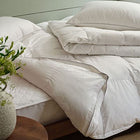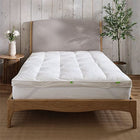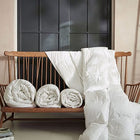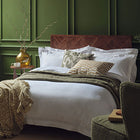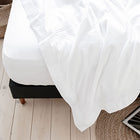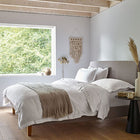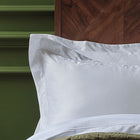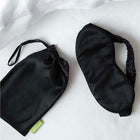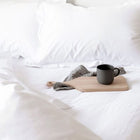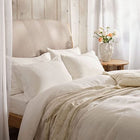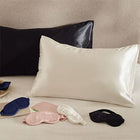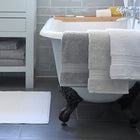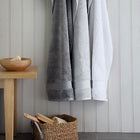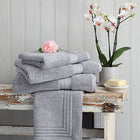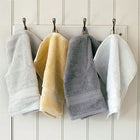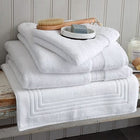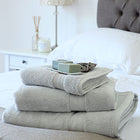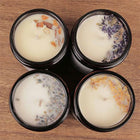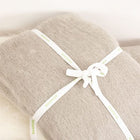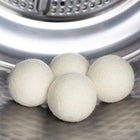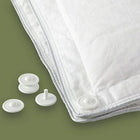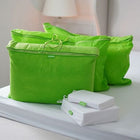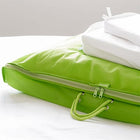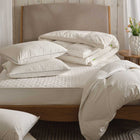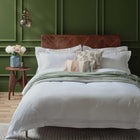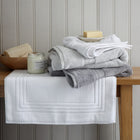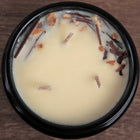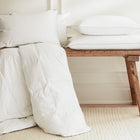
Nomite anti-allergen accreditation
If you see the Nomite mark on bedding, duvets and pillows, then you can be reassured that it will be suitable for you if you suffer from a house dust mite allergy.
So you can still enjoy sleeping with natural down and feather bedding, like Scooms Hungarian goose down duvets and pillows, even if you have a house dust mite allergy or asthma. Just make sure the label shows the Nomite Standard Mark.
Find out what the Nomite anti-allergen accreditation means in our guide below.
Plus 7 top tips for keeping those pesky dust mites out of your bedding:
- What is Nomite?
- Nomite duvets and pillows
- Dust mite alleries
- Humidity
- Fabric
- Feeding
- Other important bedding certifications
- 7 top tips for keeping dust mites out of your bedding
What is Nomite?
The Nomite Mark is an anti-allergen standard that indicates that a product, such as down and feather bedding, is suitable for house dust mite allergy sufferers.
According to Nomite:
‘Long-term studies have found only extremely small concentrations of mites and allergens inside down and feather bedding.
Down and feather beds achieve, therefore, extremely positive results when compared with synthetic bedding. They are completely safe from an allergological point of view.
Bedding articles filled with down and feathers neither host house dust mites nor do they provide a source of food for them.’
Nomite duvets and pillows
Scooms Hungarian goose down pillows and duvets are Nomite approved, certifying that they are both suitable for house dust mite allergy sufferers.
Customer review for the Scooms Hungarian goose down pillow by Rosemary:
“High quality anti allergy pillow. With previous pillows I woke up with a headache and stuffy nose - not any more. It is so comfortable to lie on - so supportive. I would definitely recommend this pillow for a perfect night's sleep. I love my pillow!”
To find our more read our Down duvet guide.
Dust mite allergies
So what is a house dust mite? It's a tiny creature, related to the spider and tick that's not visible to the human eye as it measures around a third of a millimetre. Apparently, there are 47 different species! The most common house dust mite – Dermatophagoides pteronyssinus – likes to live in the humid and warm places in your house like bedding, carpets and soft furnishings.
People can be allergic to the dust mite droppings which become airborne and are inhaled causing an allergic reaction in sensitive people. Often this results in perennial allergic rhinitis, producing sneezing and a blocked or runny nose. According to Associate Professor Jonathan Peter from Groote Schuur Hospital and the University of Cape Town Lung Institute approximately 25% of people suffer from allergic rhinitis.
Scientific research has demonstrated that even if you suffer from house dust mite allergies or asthma you can enjoy sleeping with natural down and feather bedding for three key reasons: humidity, fabric and feeding.
Humidity
The house dust mite needs high humidity to thrive, which it can’t find in down and feather bedding because of its thermal and climatic abilities. Down and feather duvets and pillows quickly warm up while you sleep, continuously dissipate moisture absorbed from the body and quickly decrease in humidity when aired.
Fabric
Down and feather proof fabric will have a very tight weave to stop the down and feather leaking through the fabric which also stops mites from passing through, adding extra protection. The thread count of the duvet or pillow casing should be at least 246 to prevent dust mites penetrating. NOMITE® certified down and feather bedding also use down and feather proof fabric ticking, which also acts as a ‘barrier’ to the dust mite.
Scooms duvet and pillow casings have 300 thread count with a special tight weave.
Feeding
House dust mites mostly eat the scales of both human and pet skin. Apparently, a single human produces around 0.5 to 1 gram of skin scales every day. Several thousand mites can live off 0.25 grams for months! So down and feathers on not on the menu for the house dust mite!
Other important bedding certifications
- Oeko-Tex 100 - verifying that your duvets, pillows and bed linen have been tested against harmful toxins and chemicals.
- Downafresh - feather and down hygiene and cleanliness requirements to European standard EN 12935.
- Responsible Down Standard - an independent, voluntary global standard ensuring that the down and feathers come from geese that have been treated well; following the chain of custody from farm to product.
- Egyptian cotton certificate - authentic 100% Egyptian cotton trademark for bed linen.
7 top tips for keeping those pesky dust mites out of your bedding!
- Look for the No-mite mark! All Scooms duvets and pillows are No-mite accredited.
- Buy washable down and feather duvet and pillows. Scooms duvets and pillows are both washable at 40°C.
- Wash your duvets and pillows once every 6 to 12 months.
- Discourage humidity by airing your bedroom and bedding every morning by opening the windows and pulling the covers back.
- Air your bedding outside in the fresh air regularly if you can.
- Sleep in a room with a temperature of around 18 °C.
- Replace your duvet every 5 years and your pillow every one to two years.
